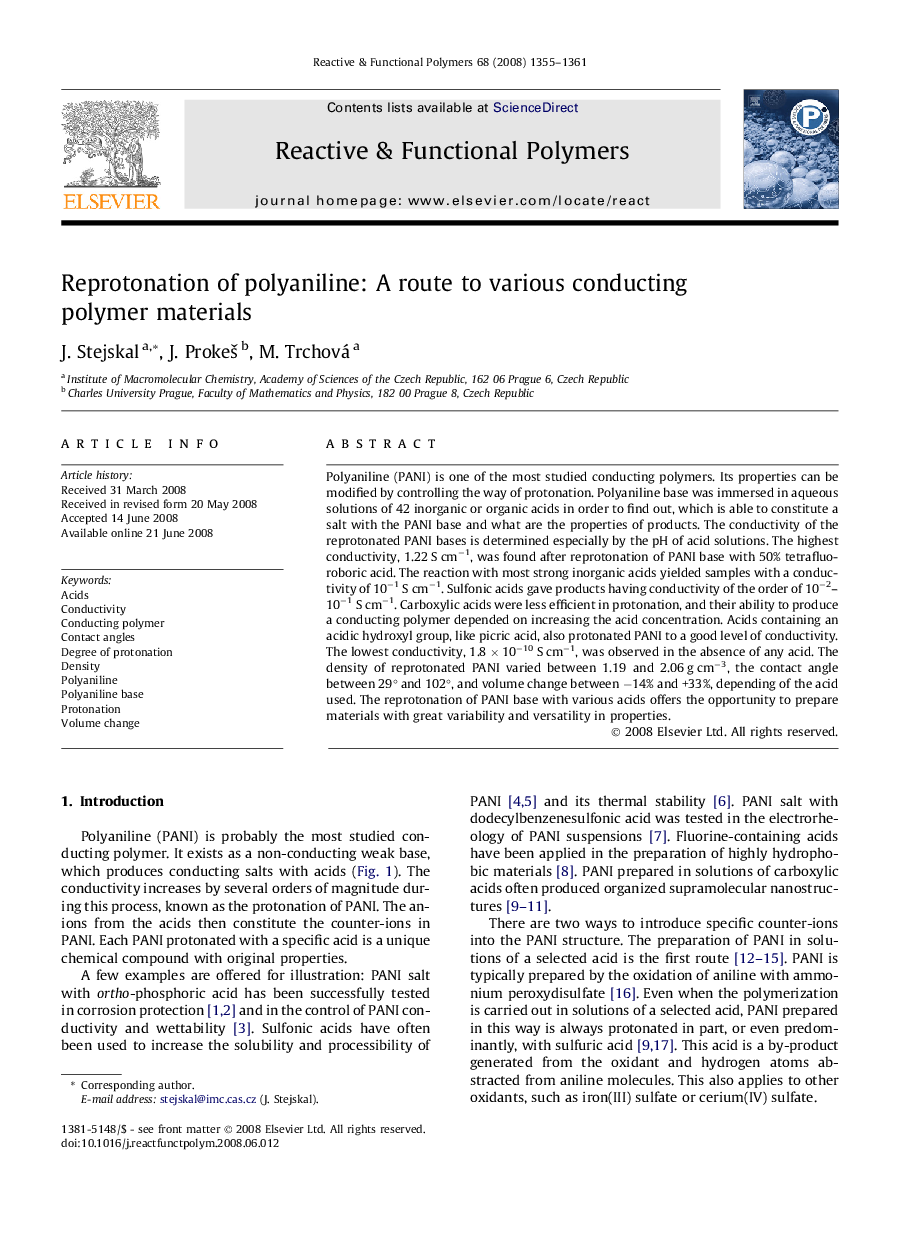| Article ID | Journal | Published Year | Pages | File Type |
|---|---|---|---|---|
| 5210747 | Reactive and Functional Polymers | 2008 | 7 Pages |
Abstract
Polyaniline (PANI) is one of the most studied conducting polymers. Its properties can be modified by controlling the way of protonation. Polyaniline base was immersed in aqueous solutions of 42 inorganic or organic acids in order to find out, which is able to constitute a salt with the PANI base and what are the properties of products. The conductivity of the reprotonated PANI bases is determined especially by the pH of acid solutions. The highest conductivity, 1.22 S cmâ1, was found after reprotonation of PANI base with 50% tetrafluoroboric acid. The reaction with most strong inorganic acids yielded samples with a conductivity of 10â1 S cmâ1. Sulfonic acids gave products having conductivity of the order of 10â2-10â1 S cmâ1. Carboxylic acids were less efficient in protonation, and their ability to produce a conducting polymer depended on increasing the acid concentration. Acids containing an acidic hydroxyl group, like picric acid, also protonated PANI to a good level of conductivity. The lowest conductivity, 1.8 Ã 10â10 S cmâ1, was observed in the absence of any acid. The density of reprotonated PANI varied between 1.19 and 2.06 g cmâ3, the contact angle between 29° and 102°, and volume change between â14% and +33%, depending of the acid used. The reprotonation of PANI base with various acids offers the opportunity to prepare materials with great variability and versatility in properties.
Keywords
Related Topics
Physical Sciences and Engineering
Chemistry
Organic Chemistry
Authors
J. Stejskal, J. ProkeÅ¡, M. Trchová,
